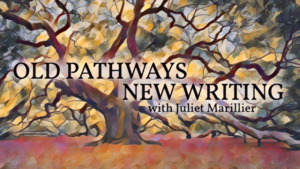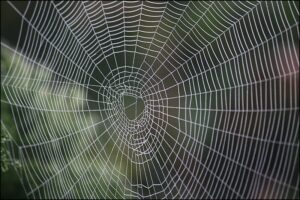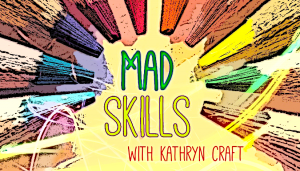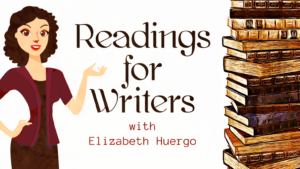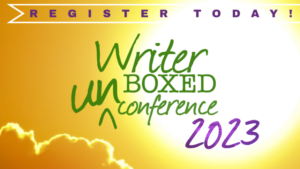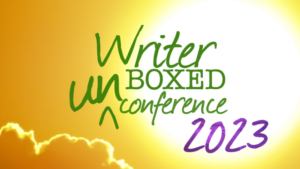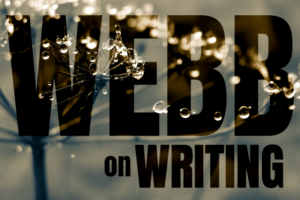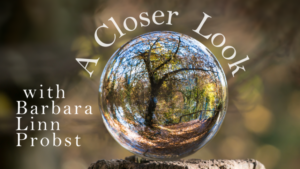Inspirations
Here in the southern hemisphere the season is turning. A baking hot Australian summer—now even hotter thanks to climate change—gives way to cooler and damper conditions where I live, but not before a period of dramatic rises and dips in temperature from day to day. Inside, dogs are snuggling close to heaters. Outside, leaves have been falling for months, or so it seems. I wish I could understand the mind of a tree, with the climate under such stress, and the ancient, steady pattern of the seasons replaced by wild extremes. Instead, I rake up the leaves. I greet the magpies, regular visitors to my garden. I check on plants that are in trouble for one reason or another, and attempt solutions for them. I feel delight that some are doing well despite the odds. I observe that some plants have been confused by the juxtaposition of very hot days and chilly ones; of (literally) months without rain followed by a flooding deluge. Trees respond by putting out new shoots in autumn, or flowering out of season, or with that continuing leaf drop. When I go back indoors to write, my mind is ready for the task. It’s little wonder that my work in progress is built around a threat to nature, and a protagonist who must overcome extreme challenges, both internal and external, to fight for what they believe in.
I’ve blogged before about the way natural cycles—the seasons, the weather, the life patterns of creatures, including humankind—helped shape the spiritual beliefs and the storytelling in societies of the past. These days, armed with scientific knowledge, we are less likely to blame some malign god for a devastating flood, fire, or plague. We are less likely, when witnessing a growing disaster of human making, to believe a kinder deity can supply solutions. It often seems there are no solutions. But we writers have a strong tool in our hands. As the storytellers of this age, we can make a difference; we can fight for a cause through our work. Not by hammering the message home; not by ranting and raving; not by lecturing. Through the magic of story. The story, well told, captures the listener or reader and holds them enthralled. It presents its message subtly, in a way that both entertains the reader and causes them to think, to ponder, to try out new paths, to learn.
I’m coming out of a two-year writing gap, with the exception of a couple of short stories. That’s a long hiatus for me. Prior to that I’ve had a new novel on the go every year since my first was published way back in 1998. Now I’m happy to be tackling what might be called a project of the heart. This time around I’m working with a small independent publishing house rather than the major publishers of the past. I feel as if I have more artistic freedom, more ability to build my own passionate beliefs into the story. This is not a novel about climate change; the quasi-historical setting doesn’t allow that. But the underlying theme, related to protecting nature, is entirely relevant to the enormous challenge we face in our time. It’s also a story whose protagonist doesn’t fit the mould […]
Read MoreThe world is a marvelous and mysterious place. It’s also fairly un-understandable, at least to me. String theory in physics is well beyond my understanding. I am equally baffled by the internet, by NFTs, by the resurgence of mom jeans and mullets. Oh, and what about the artistry of arachnids? I don’t understand how that level of precision is possible, or, how those filaments can be so sticky for a fly but not for a spider.
I also spend considerable time wondering about the human brain, how it works, how it thinks, how it makes so many millions of body-related things happen. Not that the gallbladder or ear bones aren’t marvelous. But those body parts specialize in, basically, a single job. The brain is the renaissance man of the organ world: our brain tells our legs how to walk and our eyelids to blink. It tells us when to laugh because something’s funny or sleep when we are sleepy. It creates, sorts, and stores memories–some but not all. It makes us fall in love (or not). It allows someone (not me) to pole vault. It thinks. It dreams. It wonders. And for us writers, our brains allow us to create stories, our own carefully-constructed filaments of silky sticky stuff.
My brain and I also spend a lot of time thinking about creativity, especially when it comes to storytelling. How does a brain generate an idea? And specifically how do we writers come up with an idea for a story?
A few weeks back, an email landed in my inbox advertising a webinar called “Where do ideas come from?” and as I was on spring break and as I needed some help with the ideas in my pesky, crazy-making WIP, I hopped on the Zoom call and was delighted by what Joyce Hesselberth, writer and illustrator and all-around creative soul, had to say about ideas.
The seminar didn’t help me understand the neuroscience of ideas or why I wonder about arachnid architecture, but it most certainly got me thinking about how I can lubricate the idea-making portion of my brain squiggles, about how I can put myself in situations where, somehow, my cerebral soil will yield the most ideas.
Here’s what I came up with (you’ll get to share too):
Notice. When I take my dog on a walk, I bring my phone along so I can listen to a book or call a pal, or at the very least, track my steps. But the other day, I forgot my phone, and while I considered going back (why do I care about tracking steps?) I proceeded to walk, phoneless.
And boy, did I notice! The fragrance of some species of some springtime flowering bush. The symmetry of leaves. A bee’s bumbling tenacity: Do bees see all colors and smell all fragrances? Is it the stinger that gives bees such a bad rap, or is it their classification of “insect”? Do female worker bees feel any bitterness toward or envy of the queen?
I noticed a school bus parked in someone’s driveway: Where does one buy a […]
Read More
There is no Frigate like a Book
To take us Lands away
Nor any Coursers like a Page
Of prancing Poetry –
This Traverse may the poorest take
Without oppress of Toll –
How frugal is the Chariot
That bears the Human Soul –
Emily Dickinson compares a book’s power to carry us to a different place and time to a frigate. From the fathoms of memory, an image of myself as a child rises: me curled up in a remote corner, stowed away for hours in the cargo hold of a book, visiting places where there were neither bickering parents nor exile’s terrible loss. Books carried me away. They brought me back safely and just in time to set the table for dinner. As the years passed, I came to know reading as one of the surest ways of understanding the frames that shape our interpretation of the world, of others.
How do you see the world? This is the tacit question we ask an author each time we slip into a story. Reading is the closest we can be to understanding another person’s way of seeing. We are all trapped within our own consciousness. We peer through frames we are often unaware of such as culture and language, family and upbringing. Even the physiology of our eyes plays a role in determining how near or far we can see, as well as the colors and shapes of the world around us.
The price of a ticket on Dickinson’s frugal Chariot has risen. So much already overdetermines whether a child can stowaway in a book. Is the school library open, its shelves stocked? Or is it locked, deserted, filled with dust and abandoned furniture and long lists posted by the door of titles that should never ever be read? Does the surrounding community have the funds to build a public library? Are there adults around with the leisure to model the very habit of reading?
I imagine Dickinson would be disappointed to see the shift from readers as travelers to readers as consumers; or, more accurately, to readers as rapid skimmers of information packaged in a way that privileges speedy consumption over the quality of what is consumed–information over knowledge, product over process. Algorithms predict our reading choices and then present even narrower ways of seeing, thus confirming our own prejudices. Artificial intelligence machines such as ChatGPT can learn and generate language.
So why not use A.I. to generate the essays or novels an audience has learned to crave? Put differently: why not let the ends justify the means? Why not plagiarize every paper and “autocomplete” every love letter and memoir, every poem and novel all in the name of money? The romance of stowing away in a book is a distinctly quaint 19th-century idea, or so it seems.
In a recent piece in the New York Times, Noam Chomsky, Ian Roberts, and Jeffrey Watumull observe that programs such as ChatGPT offer nothing like human thought because
“[t]heir flaw is the absence of the most critical capacity of any intelligence: to say not only what is the case, what was the case and what will be the case—that’s description and prediction—but also what is not the […]
Read MoreThis is not a post to share an Eventbrite link or session lineup for the next in-person UnConference in Salem, MA. That exciting roundup and public link will drop here on Thursday.
Update: That link is HERE.
This IS a post telling you why I structured this November’s UnConference the way that I did and why I gave it the name that I did: ALL IN.
Theme
Sometimes ideas land for me all at once, and this was that kind of idea. I grabbed my phone and dictated rapidly into it. These are my actual, unedited notes, so forgive the scribble-sense of it.
Consider the effect of covid/existential crisis/loss/feeling mortal/how many minutes before midnight?/feeling that time is all we have—this moment, right now, so what will you do with it? No more waiting for inspiration, for a rainy day, for something to click, for someone or something to settle so that you can do what your bones and marrow call you to do, what you want desperately to do, what you were born to do. Today: Go “all in“ on your story, on your dreams, for your readership, for those who love and believe in you, for your community, for yourself. Because tick has never guaranteed tock. This is what we have. This moment right here. This incandescent present. So be present for it. Right now. Write now. Write on.
Later, I shared the notes with my husband, who gave me an enthusiastic thumbs up. “That’s it,” he said. “That’s what people need to hear.”
Hell, it’s what I needed to hear, and what I finally–finally–was coming to feel again. The desire to write. That little flame coming back. It needed fuel, and this conference would be THAT.
It took a little longer for my ideas to gel into structure.
Structure
While I knew I wanted to put on another UnConference, I hadn’t yet landed on some essential components, including how it would look and move throughout the week. These details are important, or at least are to me.
I began reviewing feedback from our past live events. We’d always had a 4-8 hour craft session on Friday, and some said they felt it was much for the last day, when they were already stuffed with ideas. The problem of overwhelm stuck with me.
So what if we pulled the longer workshop into the earlier part of the event? What if we broke things up in a different way?
Armed with sticky notes, I toyed with various scenarios, shifting longer craft-sessions-to-come into the Tuesday-Thursday afternoon schedule. Jan O’Hara, aware of my quandary, had a suggestion: Seat some of the longer craft sessions in the morning when people were freshest, their executive function reset. The idea grew on me. The sticky notes moved into new positions.
But The Friday Problem stood watching over my shoulder all the while.
Then it hit me, landed all at once again. The structure could be chaos-inspired. Because what have we been living these last many years if not chaos?
Our first sessions could help to create “good chaos”–shake things up, ask writers to consider things in a new way.
Ideas would, I imagined, float thick in the air like glitter in a disrupted snow globe. Mesmerizing. And in that state of awe and wonder, writers would be–ideally–more receptive to everything […]
Read MoreWhen I said I was majoring in Creative Writing, it began.
“Do you know how hard it is to make a living as a writer?”
Then, when I said I was applying to graduate school programs, they said, “Do you know how hard it is to get into an MFA program?”
When I said I was trying to publish short stories, they said, “Do you know how hard it is to get published?”
When I said that I was working on a novel, they said, “Do you know how hard it is to write a novel?”
When I was pregnant and starting to have kids, they said, “Do you know how hard it is to write and have kids?”
This was all part of Phase I, though I didn’t yet know this beast even had phases.
When I had two kids and said I was publishing a novel—okay, here they were outright baffled. We moved into what I’ve come to call Phase II – which is: You seem to be saying you’ve experienced legitimate success and I’m confused.
“A novel that you’re publishing yourself?” they said.
“No, it’s coming out with Simon and Schuster.”
“But how did that happen?”
“I have a literary agent.”
This appeased them. Okay, someone else made this happen for me.
“Is it a children’s book?” they asked.
“No, it’s an adult literary novel.”
Then they circled back to Phase I and said, “Do you know how hard it is to get good reviews and have a bestseller these days?”
Let me be clear. These were accountants, teachers, lawyers, doctors, stay-at-home parents, chemists… People who did hard things to make a career and who knew absolutely nothing about publishing and yet, still felt free to—maybe even compelled to—explain things to me.
And, of course, when I mentioned that I was pitching ideas in LA for film and TV, they said, “Do you know how hard it is to get something picked up in LA?”
This incredibly consistent cultural effort to keep my hopes down—and therefore keep me in my place—continued on for a few decades. I published over twenty books, had four kids—my career kept going.
Fast-forward, I was recently at a small dinner party with friends and mentioned I had a new book coming out, a collection of mostly high-concept, literary short stories, intimately told, written with an eye primarily for film and television.
The man hosting the party seemed very interested. I explained what I enjoy—making a film or the beginning of a television show appear in someone’s mind as they read—and also explained my business model, that the stories go out to producers.
“And have you had any luck selling them?”
“Yes, we’ve sold many of them.” At this point, my spouse, Dave, and I were thinking about setting up a production company —“do you know how hard it is?”—which we now have done.
“And who have you sold these stories to?” the man asked.
I understood we’d moved into Phase II, and I needed to help him make sense of this.
“We have over twenty projects in development with some at places like Netflix, Paramount TV and feature…”
The conversation went on as he ate, saying very little. His spouse asked some questions, and I tried to explain […]
Read MoreToday, we welcome back author, book coach, and actress Mary McDonough. Mary has kindly agreed to write a series of book-coach-related posts for us–because sometimes (often? in nearly every instance?) it takes more than a single action to deal with the boulders you’ll meet on the road to publication.
Welcome, Mary!
I feel blocked about writing my second piece for Writer Unboxed. While I did poop scoop today (click HERE if you missed my first article), I’m finding all kinds of other reasons not to write. Why, I ask myself? I’ve known what I want to write about since I finished the first article. But here I sit, facing an obstacle course that is holding me back. Perfect how the Universe brought me these blocks to consider as I write this article. Coach, coach thyself!
My last article addressed the negative voice that sometimes, or always, takes over our headspace. The inner critic who paralyzes us and crushes our creative spirit. The “You can’t have that; you can’t do that” voice. I call it the No-No Voice. It leads us away from writing. For me, I tend to look at all the shiny things in my office instead of writing. Look, is that a woodpecker tapping into the facia on my house? What a lovely rose quartz crystal. Maybe I should hold it for a while. Meditation is always good. Oh yeah, writing the article. Focus, Mary.
I often hear my clients say, “So now that I KNOW about the No-No Voice, how do I stop it?” They want to get rid of it immediately and forever. Some clients want to strangle or kill it like a character in their books, which is great because here comes the creative instinct! But I encourage a deeper dive into why these obstacles are there in the first place, so we can learn to move past or around them, because they do come back. I’ve even challenged people to use the blocks to their advantage. “But how?” they say.
At times in my life, I’ve been convinced the blocks on my path stop me from getting where I want to be. It’s all their fault and now I’m stuck. When this happens, I can usually see stuck-ness all over my life. In my emotions, my relationships, driving to the market with stupid drivers all around me. Even my dog works my last nerve. It can’t be the dog’s fault.
When I’m stuck in my writing, I see stuck-ness all over there, too. My plot feels stuck, my characters are stuck, my career is stuck. I just can’t get myself to enter the course to get back on track. I watch the blocks grow into boulders and then rise into unsurmountable mountains. Other times I see quicksand waiting to get me if I move forward. I see no way to get back on my writing road. This is when the No-No Voice can jump in and have a field day.
The narrative can sound like this: I can only write what I know. I have a deadline. I feel pressure. I’m not that good. My story sucks. I can’t write outside my gender, race, religion, age, or experience. I haven’t lived or researched enough. I’m too… […]
Read More
I think most of us would agree that 2022 was rough. The war in Ukraine. A war of another kind taking place right here at home, tearing apart families and communities, everyone pointing fingers at the “other side” for this pseudo-dystopian society in which we currently reside. For survivors of sexual or religious trauma—and there are MANY—simply keeping up with the news over the past year has been a daily minefield of panic triggers.
Writers, many of us empathic by nature, are hard-wired to struggle in this kind of reality. When marginalized and vulnerable groups are being targeted, we feel the echoes of history in our bones. We know that the educated and the artistic will be next. We’ve heard this story before. Hell, we may even have written our own versions of this story.
It never ends well.
Fellow authors are having their books banned in wide swaths of the country. We may be tempted to self-censor, to avoid controversy. Would we still want a character to choose abortion if a conveniently timed miscarriage would work? Would we risk having our book removed from school libraries by including a boy who wears black nail polish? Dare we say (or even imply) that he might be something other than straight? Do we set our story in 2019 or earlier to avoid making a political statement over the use (or not) of face masks? Do we avoid including minority characters or touching on any racial themes for fear of being labeled “woke”?
Having to even consider these things, to second-guess, is creative suffocation. It makes me want to slap a Pride flag on that boy’s drum set—yes, I’m talking about one of MY characters—even though he hasn’t yet revealed his sexuality to me. In the grand scheme of the story, it won’t even matter, but I can hear my two Gen Z girls chanting “Do it! Do it!”
So I might.
How do writers (or other artistic types) cope?
I’d be willing to bet many of us have spent the last year (or more) ping-ponging between rage and panic. Fight or flight.
It isn’t healthy. It isn’t sustainable without leading to despair.
For anyone else trying to claw themselves out of that trench, I propose making 2023 a self-care year. This will look different for everyone, of course, but collectively nurturing body, mind, and spirit may help us reclaim pieces of ourselves that have been lost, or at least temporarily silenced, in the upheaval around us.
Take care of your body
For me this means keeping on top of regular screening tests because I “won” the genetic lottery. It also means taking the damn vitamins, eating (or juicing) the damn vegetables, summoning the motivation to get back into a post-surgery exercise routine, and trying to sleep more. Have I succeeded in all of this? Not in the least. But I know what needs to be done and I’m working on it.
Take care of your mind
Take stock of those stressors over which you can have any control.
If beginning or ending your day by reading the news or scrolling through social media causes your cortisol levels to skyrocket, maybe now is the time to ditch that habit. Allow yourself ten to twenty minutes in the middle of the day to […]
Read MoreWhen I think of the word home in relation to writing fiction, certain novels spring immediately to mind. There’s Louisa May Alcott’s Little Women, in which home and family are the core that binds all. Tolkien’s The Lord of the Rings trilogy, in keeping with much high fantasy, has an epic journey away from home and an eventual return, but our protagonist is so changed by his experiences that the old home no longer fits him. The Guernsey Literary and Potato Peel Society, by Annie Barrows and Mary Ann Shaffer, is a long-time favourite of mine. Through letters exchanged between various characters, it tells a moving story of life under wartime occupation on the island of Guernsey, and the power of books and reading to unite a community in times of crisis. It is anchored, not only by the idea of Guernsey as both ancestral and newly discovered home, but also by the way its motley crew of characters becomes a kind of family. And what about A Gentleman in Moscow by Amor Towles? Its central character, under lengthy house arrest in a luxury hotel, has the remarkable capacity to create a home and draw in a circle that feels like family. Barbara Kingsolver’s Demon Copperhead, whose framework is that of the Dickens classic David Copperfield, is a powerful story of a young man from a deprived background growing up in an inadequate foster care system, and shows the reader that home may not necessarily be a physical place. Sometimes it may be about friendship, community, or meeting just one person who believes in you. It can be a long journey for the damaged spirit to find that home, a journey every bit as epic as Frodo’s from the Shire to Mount Doom (and back again.)
Many traditional tales are built on journeys – stories of “there and back again.” Often three siblings in turn (ah, that magical number 3) are sent out on a quest of some kind, perhaps grand in scale, perhaps as domestic as fetching water from the well. The behaviour of each brother or sister determines how the quest concludes. Generosity of spirit, or kindness, or selflessness, often sees the youngest or least likely sibling achieve the goal. If magic is involved, the right behaviour may mean it works in your favour – for instance, when you speak you cough up rubies and diamonds rather than frogs and toads. I can’t say I find either appealing! Or the quest may be undertaken solo, as with Jack and the Beanstalk, requiring physical strength, quick wits, and a readiness to heed good advice. These stories don’t always contain a return home, at least not to the home of before. In fairy tales, achieving the quest tends to enrich the protagonist’s circumstances so that the hut becomes a comfortable house, or the house a mansion, or the mansion a castle. What is the message of such stories? Do good and you will become wealthy? Do good and you will become powerful? The message that doing good will make you happy can get a little lost sometimes. But as I’ve said before, those tales change with the passage of time and the consequent changes of social norms. My story Copper, Silver, […]
Read MoreYou started writing because you loved writing, right? The power to make something from nothing, to create, to bring characters and events into being and take readers along with you on an emotional journey. It was heady. Powerful. Do you remember that feeling?
Now: years later, do you still have that feeling? Every time you write? Even sometimes? For many of us, even though it started out so fun, the act of writing can become downright unpleasant. It’s work. Some days that work feels like a grind. Especially if you’ve professionalized it, entered the world of publishing and contracts and deadlines, want to can get smothered under have to.
There’s nothing wrong with professionalizing your writing. If you want to write productively, most of us need to do that to some degree. We have to sit down to write on days that we don’t feel like it, produce text that doesn’t make our heart sing. Writing is work, and sometimes it’ll feel like work.
But that doesn’t mean it can’t sometimes feel like play, too.
Here are five what-if questions you can ask yourself that might help bring joy back into your writing process. Not all of these will likely work for you; in writing, one size pretty much never fits all. But you deserve a little joy, no matter where you are in your writing process or career. So let’s take a shot at having some fun.
What if you didn’t write today? If you have a daily writing process, you’re likely committed to it, which is great. When I’m under a tight deadline, I set myself a daily writing goal. But sometimes, when I sit down to write, I ask myself this question. Ugh, I don’t want to write. So… what if I didn’t? Much of the time, the reminder of what I’m working toward is enough to re-energize me. If I didn’t write today, I’d have to write more tomorrow, so I’m better off putting words down now — I chose this pace on purpose. Sometimes the question reminds me that writing is one of the activities I enjoy most in my life, and it’s a reward, not a punishment. And yes, sometimes asking the question leads to not writing that day, and that’s fine too. Some days are like that! So far it hasn’t caused me major career trauma!
What if you wrote out of order? I am a lifelong draft-in-whatever-order writer, but a lot of people aren’t. And your process is your process; I respect that. But… if you haven’t tried jumping ahead, maybe give it a shot. If you’re ground to a halt on Chapter 3 and the joy is gone, maybe try writing another scene you know you need, no matter where in the manuscript it’ll end up. What about the big emotional climax? What about–gasp–the ending? Maybe it works for you, maybe it doesn’t, but you’ll never know until you try.
What if you make a bad choice? The fear of going down the wrong path in your writing can be paralyzing. So if you’re working on a scene and it feels like torture, go ahead and mess it up. Make bad choices over and over on purpose. Write the clunky prose. Let your characters act completely out of character. Write the […]
Read MoreMost of us are busy humans, living busy lives, filling up the time with SO.MANY.THINGS. Child-rearing, elder care, building our careers and riding the waves that come with it, maintaining our homes, our relationships. For me, the last several years I let those things expand until I’d squeezed out my hobbies and squeezed out my self-care—and squeezed out my health. I hit major burn-out mode with writing and major physical and mental exhaustion. Finally one morning last fall, I woke up as tired as if I hadn’t gone to bed and said, why am I doing this to myself? What’s it all for anyway? ENOUGH. It was time for an about-face, a change, a rejuvenation of sorts. I decided I needed to make some major changes. To take action.
Action creates motivation, not the other way around.
You aren’t suddenly motivated to get up and change your habits, or to finish that book that’s languishing on your desktop. Objects in motion tend to stay in motion and that’s the truth. I knew I had to take the first step toward this fresh, new path I wanted to be on.
It’s been a few months since that fall day of ENOUGH and the calendar turned from 2022 to 2023, and as it did, I decided my word for the year would be HEALTH. Physical health and writing health.
So that’s what I’ve been doing. Taking action. Working toward health in body and health in my writing life.
Read MoreWe’re passionate about writing, and that passion makes us want to grow, to get better and better at our craft. Fortunately—or maybe not—there are whole industries devoted to helping us do that.
There are workshops, webinars, courses, programs. Craft books, editing services, conferences, support groups. Some, like the craft essays here on Writer Unboxed, are free. Others can have price tags of hundreds or even thousands of dollars.
It seems reasonable to ask which, if any, of these classes and services actually help people improve their writing. To put it another way: is it “worth” signing up for all those programs and buying all those books? Or, in the end, is it a combination of talent, voice, and persistence—an elusive something that doesn’t lend itself to generalization?
I can’t possibly answer the questions I just posed, of course. But I can offer some reflections to help us explore them together.
First, let’s take a look at the ways that people try to improve their writing. For simplicity, I’ll divide them into two categories: those that focus on turning to “expert” sources outside oneself, and those that focus on turning inward, toward oneself.
External sources: Seeking knowledge and guidance from others
These “writing improvement strategies” are based on the assumption that there are people with more experience, wisdom, and objectivity who can teach us what they know—and thus, by the diligent application of what they advise, we can become better writers.
Sometimes this takes place indirectly—through craft books, courses, workshops, programs, and articles that offer guidelines, templates, lists, pointers. I call them indirect because the authors and instructors may never see your actual pages; it’s up to you to absorb their advice and figure out how to apply it to your own work.
At other times, the instruction takes place directly when a professional—a teacher, coach, developmental editor, or other experienced mentor— reads your pages and explains what you, specifically, need to do to make it better. Because this kind of assistance is more personalized, it tends to be costlier than the generic advice offered in webinars and books.
Note: Direct advice can also come from non-professionals or semi-professionals, like beta reading services and critique groups. This kind of feedback is not necessarily meant to teach the author how to be a “better writer,” however. As I wrote in my December 2022 article on this topic: “Unlike editors, there’s no expectation that beta readers will have advice about how to fix whatever weaknesses they find. They’re civilians, proxies for our future readers.”
Internal sources: Cultivating personal qualities, behaviors, and beliefs
Other strategies, in contrast, are based on the assumption that knowledge alone won’t produce better writing; vision, confidence, and perseverance are the fuel, the key to going beyond “technically correct” writing to discover one’s true voice.
This can mean changing one’s habits and behavior—for example, by creating a dedicated writing space where distractions are minimized, or committing to a disciplined, daily writing practice. Sometimes people undertake a structured routine like writing a minimum number of words each day, attending a weekly writing group, keeping a notebook of writing prompts, or making themselves accountable in some other concrete way.
The approach can also be internal, through developing inner qualities like confidence and determination. Belief in oneself can be strengthened by practices […]
Read More
